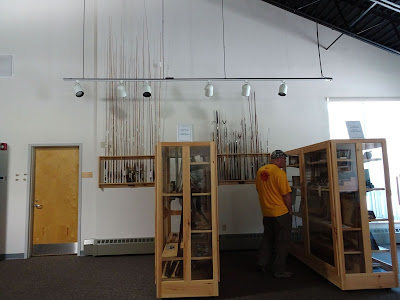While driving around one day we passed the Downeast
Institute building. It sounded like a
place we would like to visit and after some internet research we called them up
to see if they provided tours. We got a
tour time for the very next day.
In 1987 clammers in this area became concerned about the
decline in soft-shell clam harvest. They
teamed up with Dr. Brian Beal, a professor of marine ecology at the University
of Maine to create the Beals Island Regional Shellfish Hatchery. It was a facility where wild clams were
spawned, clam larvae and juveniles were raised and seed clams were produced for
planting on the depleted municipal flats.
In 2000 the name was changed to Downeast Institute for
Applied Marine Research and Education (DEI).
After several expansions during the next 16 years, the
final phase of the expansion was completed 2017.
$5.8 million expansion.
The first thing you see when you come through the front
door is this large touch tank.
It was full of life.
We spent quite some time here before our tour and again after our tour.
I had never really thought about lobsters starting out as
eggs and growing into the one-pounders you see in the grocery store.
It takes 7 years for a baby lobster to reach legal
harvesting size.
The touch tank was full of baby lobster.
The little dots on the bottom are baby lobsters.
There was a lot to see in the touch tank.
Pout fish.
Sea urchin
Our very nice, young, tour guild came out to give the
tour. We were the only ones on the tour
and she was very enthusiastic.
This facility raises several different kinds of shell
fish. They also grow their own food. These are algae tanks.
Different shell fish prefer different kinds of algae.
American Oysters and European Oysters are raised here.
Hundreds of little oysters.
Razor clams start out extremely tiny!
There were thousands of soft shell clams.
These are larger clams.
This is an experiment with different kinds of substrate. It's the material that clams grow on.
The ultimate goal of this new facility was to build a
fully equipped marine research laboratory and expand the shellfish hatchery.
Apparently, baby lobsters are tiny cannibals and need to
be separated.
One lobster per container.
Apart from the hatchery building is 2,000 feet of deep-water
frontage and two working lobster pounds.
This is the easternmost marine research laboratory and
education center in the US.
This is a great place to visit. You do have to call ahead for a tour time.
We spent a little more time at the touch tank before leaving.




















































